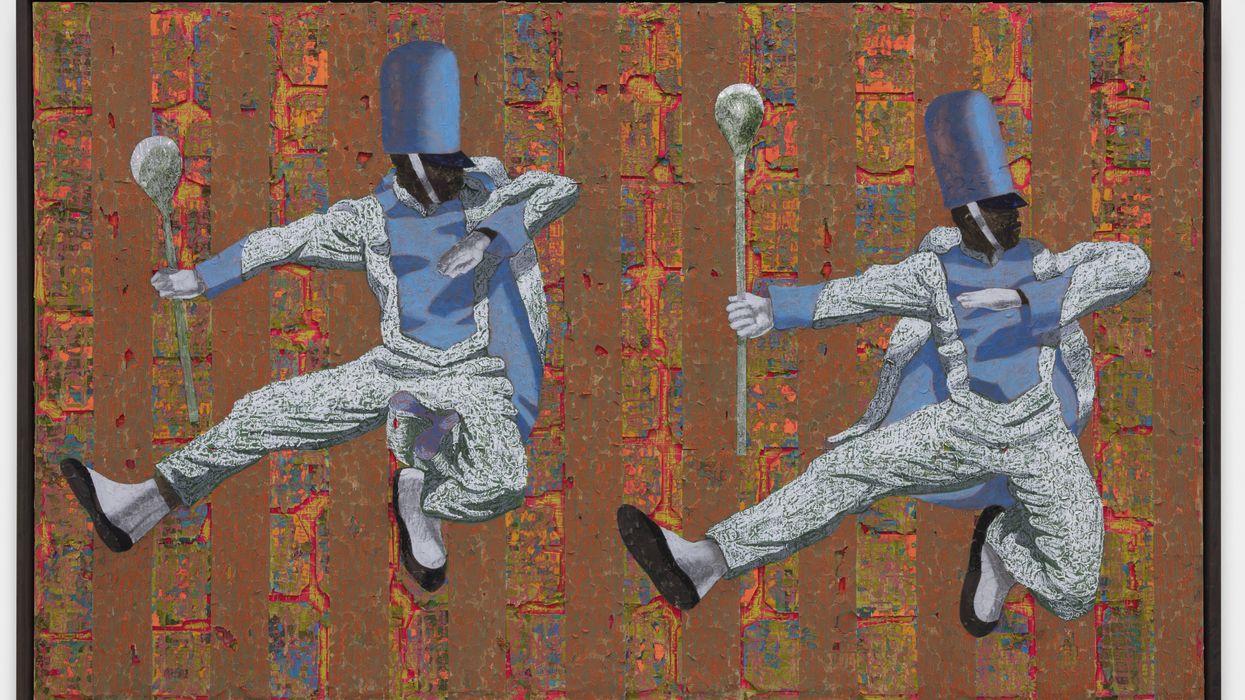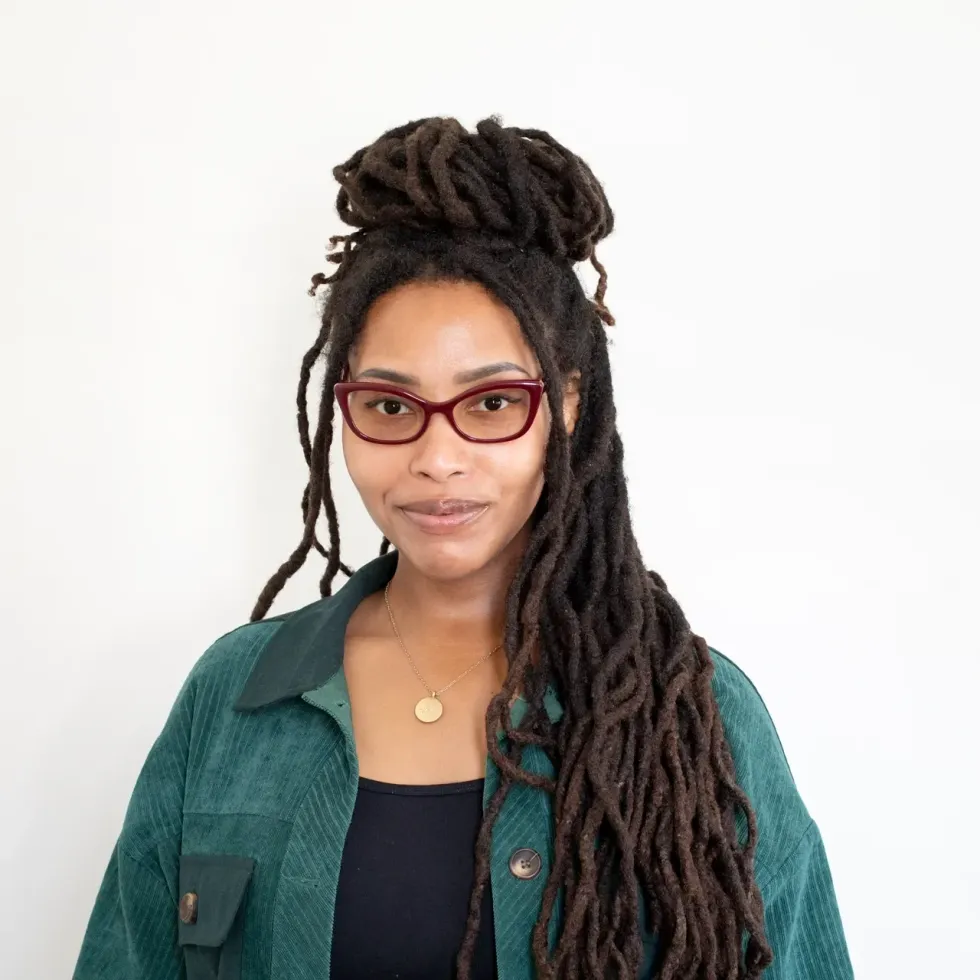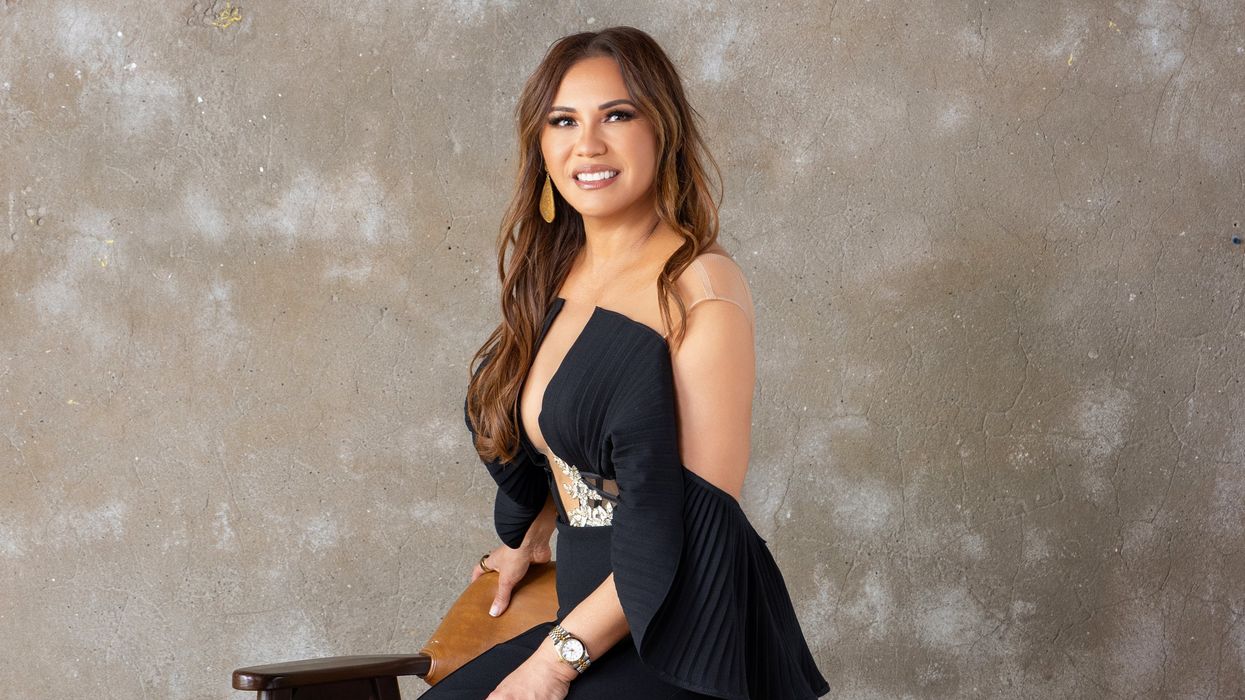Inaugural ‘Black Art Houston’ Celebration Takes Place City-Wide This Weekend

'Airborne Double' by Black Art Houston artist Derek Fordjour
IN 2021, WHEN Anita Bateman arrived in Houston as the new Associate Curator of Modern and Contemporary Art at the Museum of Fine Arts, Houston, she welcomed the opportunity to discover her potential as a curator.
At the time — in the midst of a pandemic that refused to disappear, and global protests led by the Black Lives Matter movement — the cultural landscape of Houston was changing, as institutions across the country began to seriously rethink how the arts could be presented to a more diverse public. Coming in as a “blank slate,” though well-armed with a Ph.D. in Art History and Visual Culture, Bateman was relieved to find herself among colleagues willing to address the tropes and social dynamics that impede collaboration between museums and initiatives to reach broader audiences.

Bateman (photo by Asaaf Hinden)

Tschabalala Self's 'Sprewell'
“What if we broke down those walls that kept us separate and do something on a massive scale to show that we have a common interest?” says Bateman. “That’s what Black Art Houston is.”
Masterminded by Bateman and realized as a collaboration between the MFAH and an impressive range of community partners, including the Contemporary Arts Museum Houston, the Holocaust Museum Houston, and the Community Artists’ Collective, the inaugural Black Art Houston is a sprawling, citywide celebration of contemporary Black art and culture, featuring museum and gallery exhibitions, public programming, and open artist studios. The events — and there are several — take place Feb. 17-19, and a detailed schedule is available online.
A few of the many exhibitions on view during the weekend include the MFAH’s Multiplicity: Blackness in Contemporary American Collage, curated by Bateman; Here and Now: Cultural Expressions at the Community Artists’ Collective; and Microcosm by NEGRASSO at ART IS BOND gallery. Public programming includes the Ninth Annual Citywide African American History Parade & Symposium on Feb. 17 with former principal dancer of the Houston Ballet Lauren Anderson as grand marshal; and a Sunday morning meditation session with the Black Man Project and Black Woman Project. Some of the Houston artists hosting open studios include Christopher Paul, Anthony Suber, Tay Butler and Randy WROSIV.
The idea for Black Art Houston was sparked by Bateman’s first MFAH curatorial assignment to oversee the programming for Afro-Atlantic Histories, an expansive and multilayered exploration of the legacy of the transatlantic slave trade as seen through the eyes of artists from around the world. The exhibit opened in Oct. 2021, while the CAMH had The Dirty South: Contemporary Art, Material Culture, and the Sonic Impulse on view, and Bateman recognized the shows were in conversation with each other, but the two institutions had yet to collaborate. She proposed a program in which Houston-based installation and performance artist Viktor Givens guided a procession of museum visitors from the grounds of the CAMH and into the MFAH’s exhibition. The event was a success, and both institutions made it clear they were open to hearing new ideas on how to connect with visitors and speak to the times we’re living in.
“We have our mainstay blockbusters, but then we have more experimental shows, which in a lot of ways, is what the Kehinde Wiley exhibit is,” says Bateman, referring to Wiley’s monumental An Archaeology of Silence, another popular show she curated and that is currently on view at the MFAH. “There are people who said they never thought to come to MFAH who are now coming because of the roster of exhibitions we are planning.”
Born and raised in Memphis, Bateman began her academic career as a biology major at Williams College, with every intention of becoming an anesthesiologist. She took an art history class to balance out the time she had to spend in the lab, and after a fateful field trip to the Metropolitan Museum of Art in New York, fell in love with art history. She switched her major and went on to earn a Bachelor’s in Art History, and a Master’s degree in Modern and Contemporary African Art of the African Diaspora and the aforementioned Ph.D. in Art History and Visual Culture from Duke University. Maybe it’s a Southern thing, but Bateman is no staid academic and remains fully committed to amplifying local artists’ voices and celebrating the spaces where they live, work and show.“Houston allowed me a lot of free time to discover who I was as a curator,” says Bateman. “I like talking to people about their interests and really understanding how it is that I can utilize my resources, not only my position, but my own energy to help someone out.”
- 'Freedom Project' Exhibit Commemorates Galveston's Role in Juneteenth ›
- Celeb Fave Evita Tezeno, Just Cheered by ‘Vogue’, to Show Joyful Paintings at New Houston Show ›
- Cook, Paint and More! Learn the ‘Art of Fufu’ at Pop-Ups Hosted by Houston-Based Nigerian Chef ›
- Christopher Paul Creates Wearable Masterpieces — and Encourages Viewers to ‘Untether’ from Racism ›
- In New Gallery Show, Guerrilla Artist Displays Black Americans’ Struggles — and Success ›
- Iconic Gallerist Barbara Davis Reflects on 40 Years ›



